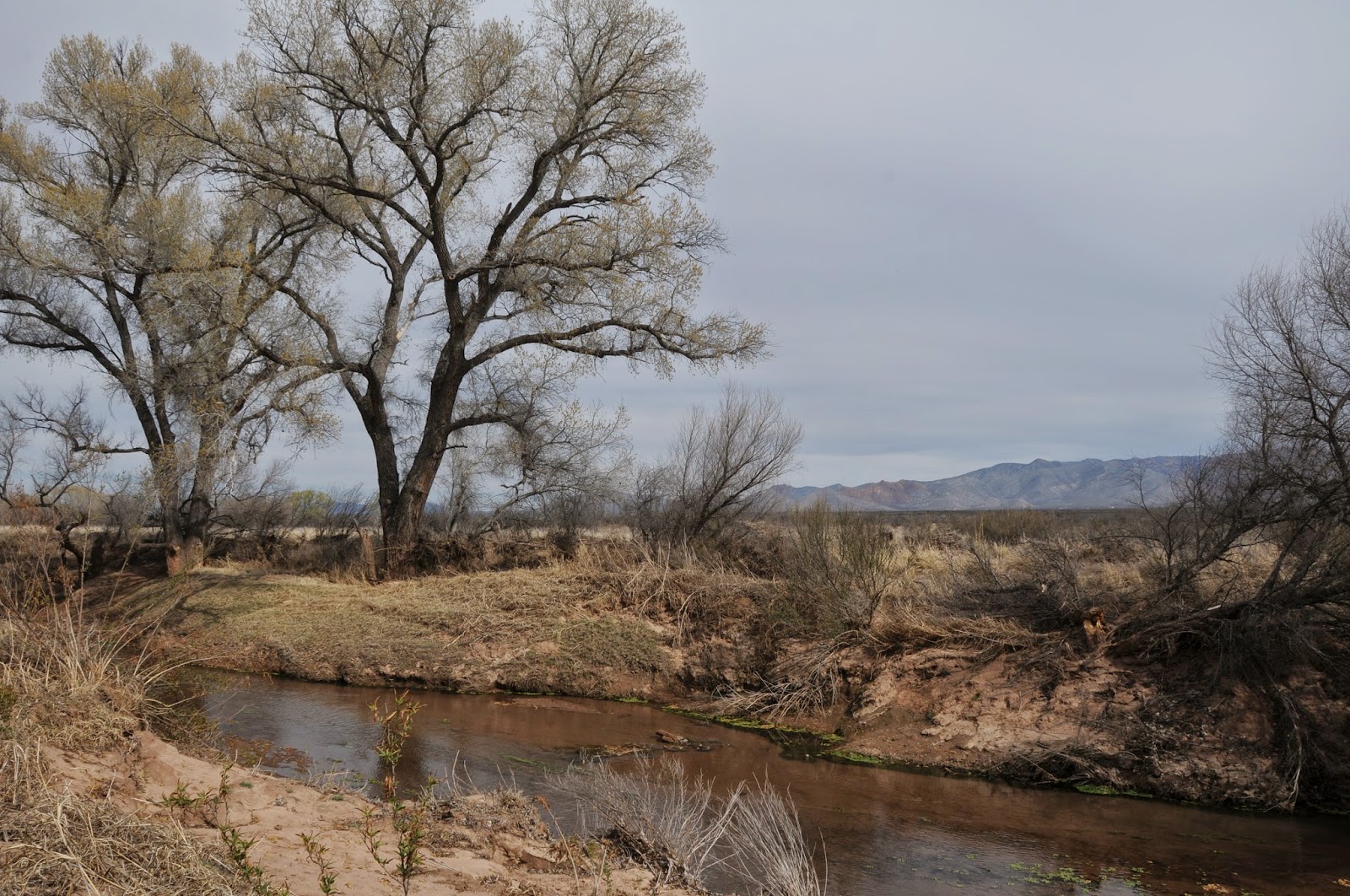MILLER CANYON
 |
| Miller (L) and Carr (R) Peaks seen from Miller Canyon |
Arizona’s isolated mountain ranges known as “sky islands” are like no other places on earth. Whether explored by car, like a drive up the Swift Trail to Mount Graham in the Pinaleno Mountains near Safford or a by foot in the Santa Catalina range in Tucson, the vertical journeys take travelers from sweltering desert valleys to cool alpine climes over just a few, very steep miles.
 |
| Oaks arch over the lower end of Miller Canyon |
Some of the most interesting sky island destinations are in the Huachuca Mountains located near Sierra Vista in the Coronado National Forest in southeastern Arizona.
 |
| Aspens glow in autumn gold below Miller Peak |
Rich in both biodiversity and human history, the chain of ragged peaks and crests that jut abruptly from the desert floor are laced with dozens of hiking trails that wind through breezy grasslands, streambeds, canyons, mineral-imbued escarpments and exposed pinnacles for myriad exploratory opportunities.
 |
| Hike is in the Miller Peak Wilderness area |
One of the easiest to get to is the Miller Canyon Trail No. 106.
 |
| Massive boulders line the trail in Miller Canyon |
The 3.5-mile route begins by circumventing a slice of private property before heading out on a former mining road. Within a few yards from the trailhead, views of the San Pedro Valley and the Mule Mountains around the town of Bisbee peek out from a fringe of oak trees and high desert scrub and cacti.
 |
| View of the San Pedro Valley from the trail |
 |
| Pines and Douglas fir trees shade the upper trail |
This little tease of vistas is the last glimpse offered before the route enters the Miller Peak Wilderness area and slips into a riparian zone at the head of the canyon.
 |
| Trail climbs from desert scrub to alpine aspens |
Shaded by gigantic sycamore and walnut trees, the green oasis is fed by an intermittent stream that flows from springs and runoff originating high in the hills above. The path gradually leaves the high desert vegetation zone and moves into a wetter, canyon-bound corridor of big-tooth maples and soaring canopies of arching oaks.
 |
| The area has dozens of connecting trails |
The trail crosses the streambed several times as it works its way uphill, hugging the edge of the sliver-thin canyon cluttered with flood debris and boulders.
 |
| Bigtooth maples clutter a drainage |
Some of the crossings expose rusty 19-century pipes that were once used to funnel water to nearby towns. As the trail gains elevation and contracts from wide dirt road to thin footpath, pine and Douglas fir trees dominate the forest, keeping the trail nice and shady for a good part of the way.
 |
| Desert and forest biozones collide in Miller Canyon |
The climbing is steady but not too difficult until around the 1.5-mile point where the first set of switchbacks herald the start of the serious lung workout ahead. This is about where relics from defunct mining operations begin showing up in oxidized heaps off the trail.
 |
| The trail crosses several drainages |
Look for gears, a boiler and miscellaneous parts disintegrating among abandoned digs.
 |
| Climbing gets steep on the switchbacks |
A second set of switchbacks make a final, more aggressive ascent, passing by distinctive Bathtub Spring to meet the Crest Trail No. 103 on an aspen-dotted ridge between Carr and Miller Peaks.
 |
| Defunct mining equipment decorates the trail |
Now clear of the thick tree cover and confines of the canyon, hikers get a second shot at gorgeous mountain and valley vistas.
 |
| Looking into Mexico from Miller Peak summit |
The Crest Trail marks the end of the Miller Canyon Trail, however, it also provides access to the spur trails that ascend both peaks.
 |
| Sycamore trees shade the lower trail |
From the junction, it’s another 1.3 miles to 9,230-foot Carr Peak or 2.3 miles to 9,466-foot Miller Peak. Miller Peak, which is located just 4 miles from the Mexico border, holds the distinction of being the southernmost high peak in the United States and is a must-do for mountain-obsessed Arizona hikers.
LENGTH: 7 miles round trip
With Miller Peak: 11.4 miles round trip
With Carr Peak: 9.4 miles round trip
RATING: difficult
ELEVATION: 5,750 – 8,525 feet, Miller Canyon Trail only.
5,750 – 9,466 feet with Miller peak
5,750 – 9,230 feet with Carr Peak
GETTING THERE:
In Sierra Vista, go 9 miles south on State Route 92 to Miller Canyon Road (Forest Road 56) on the right. Continue 2.5 miles on FR 56 to the Miller Canyon trailhead at the end of the road. Forest Road 56 is a narrow dirt road with some rough spots. While carefully driven sedans can get through, a high-clearance vehicle is recommended. Hike begins near the stop sign.
INFO:
Coronado National Forest
https://www.fs.usda.gov/recarea/coronado/recarea/?recid=25496
Learn more about sky islands:














